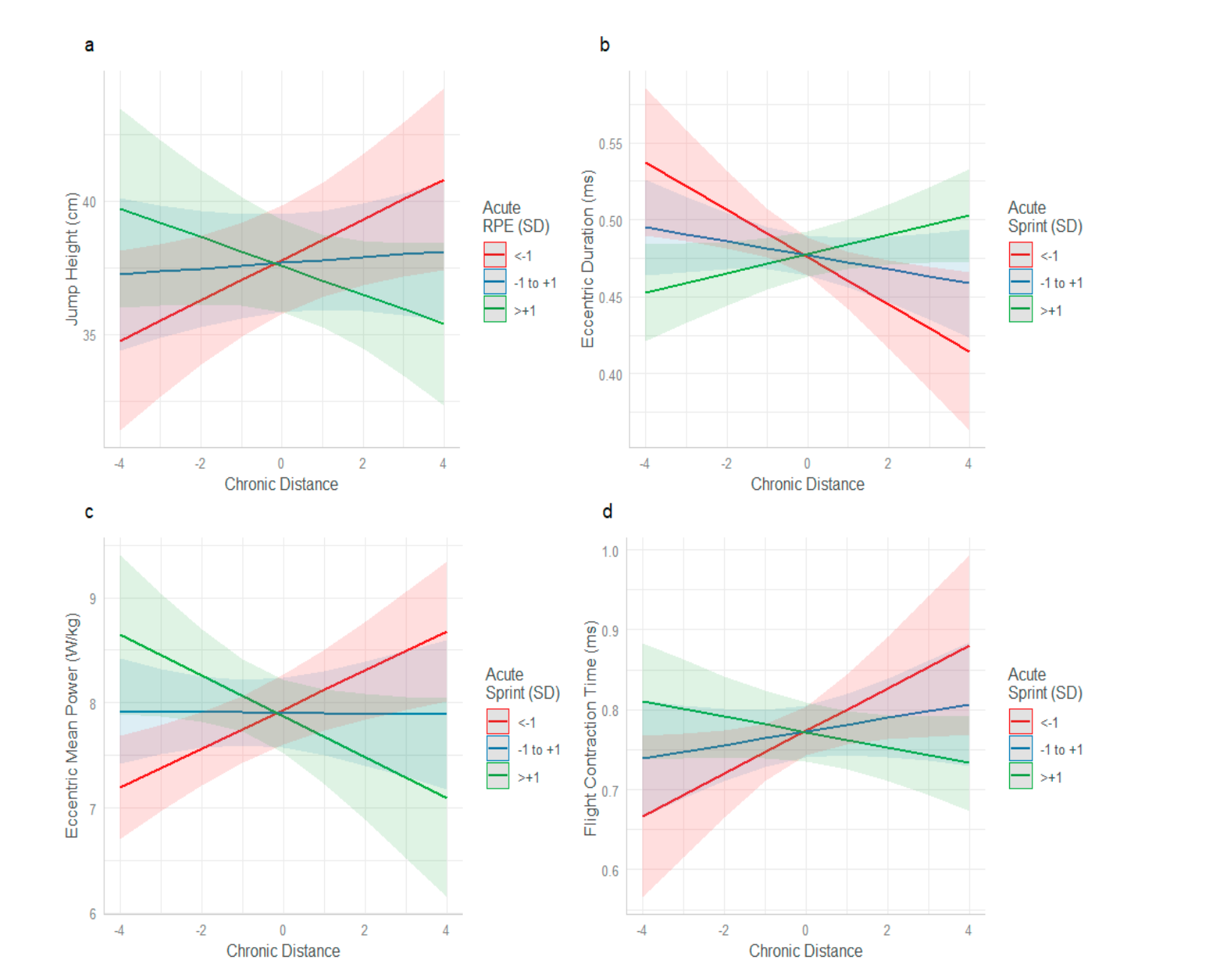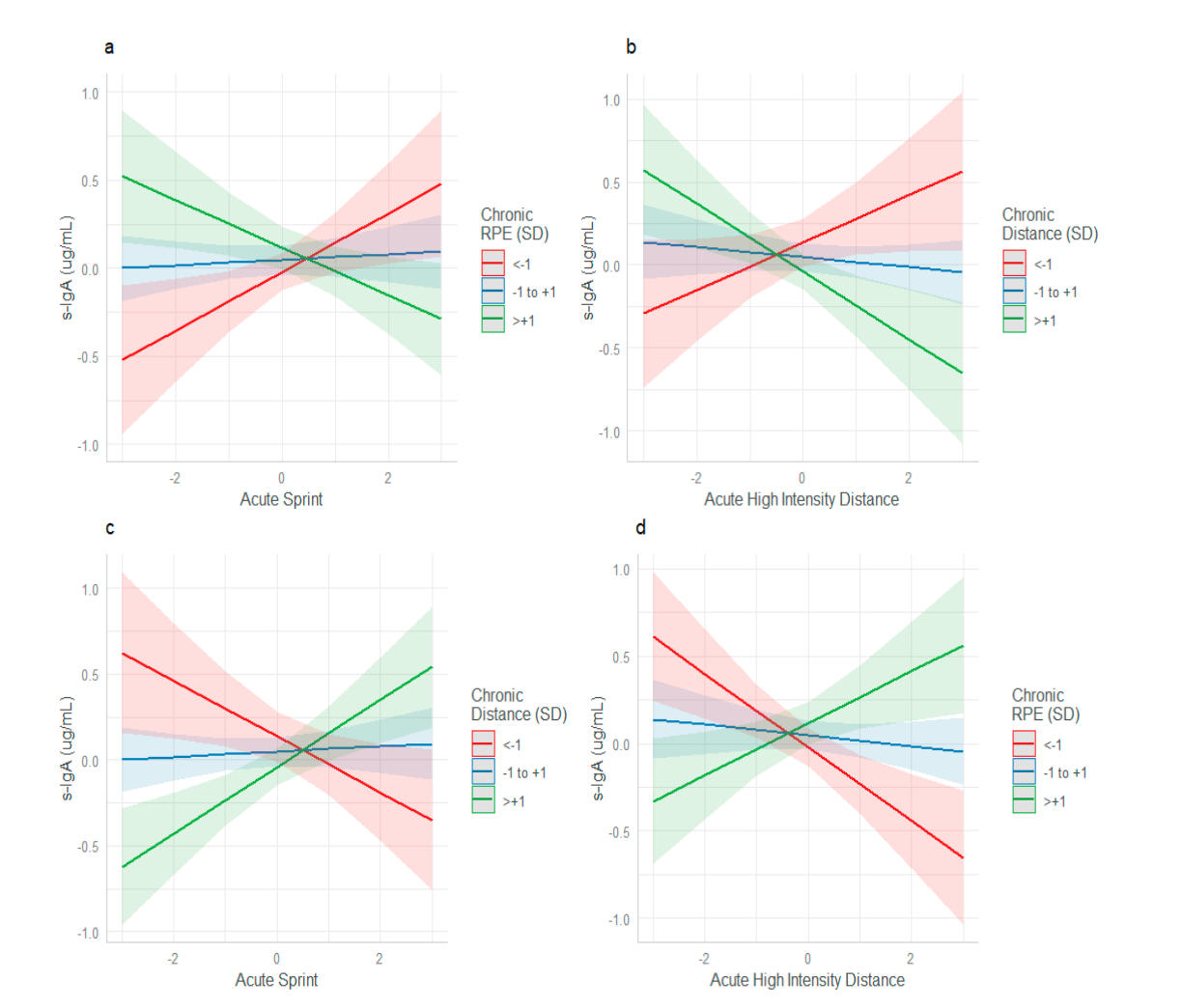In professional football, the season is long, dense, and physically taxing.
Players in the English Championship average more than a game per week for 40 weeks straight, with recovery windows as short as two to four days.
Managing training loads to optimize performance, reduce fatigue, and support recovery is the core challenge for sport science and medical teams.
This new study by Harris and colleagues examines the impact of acute and chronic training loads on neuromuscular performance, immune function, and overall well-being throughout an entire professional football season.
Research Question
How do acute and chronic training loads interact to influence fatigue markers, specifically countermovement jump performance, salivary immune markers, and subjective well-being, in elite male football players?
Research Methods
Instead of using traditional ratio-based models (e.g., ACWR), the authors take a more sophisticated approach to modeling load interactions, offering new insights for performance staff.
- Participants: ⮕ 23 elite male outfield players from an English Championship football club during the 2021–2022 season.
- Monitoring Period ⮕ 40 weeks (in-season only)
Load Monitoring
- External Load ⮕ Total distance, high-intensity distance (>19.8 km/h), and sprint distance (>25.2 km/h), measured via GPS
- Internal Load ⮕ Session RPE (s-RPE) collected after each session or match
Fatigue Monitoring
- Neuromuscular ⮕ Countermovement jump (CMJ) measures—jump height, eccentric duration, eccentric power, and flight time to contraction time ratio
- Immune Function ⮕ Salivary immunoglobulin A (s-IgA)
- Wellbeing ⮕ Hooper Index assessing mood, sleep, stress, fatigue, and soreness
Load Definitions
- Acute Load ⮕ Sum of the past 7 days
- Chronic Load ⮕ Rolling 4-week average
- Weekly fatigue and performance markers were collected on the first training day after a day off
Analysis
- Generalized estimating equations (GEE) were used to model the interaction between acute and chronic load variables and each fatigue marker.
The Results
1. Low Chronic Load Combined with High Acute Load Led to Poorer Outcomes
Players with low chronic workloads who experienced spikes in acute load showed:
- Reduced CMJ performance (slower eccentric duration, lower eccentric power, worse FT:CT)
- Suppressed salivary IgA (immune function)
- No improvements in subjective well-being

2. Higher Chronic Load Buffers Against Fatigue
Players with higher chronic workloads maintained or improved:
- CMJ outputs despite acute spikes
- Immune responses (elevated s-IgA)
- Perceived wellbeing

3. Sprint Workload Was the Most Sensitive Variable
- Sprint distance was the most influential acute variable across neuromuscular and immune markers
- Negative effects of acute sprint loads were only evident when chronic loads were insufficient

Why the ACWR Was Not Used
The Acute: Chronic Workload Ratio (ACWR) is commonly used to track spikes in load, but the researchers intentionally chose not to use it in this study.
Here's Why:
- The ACWR simplifies the relationship between acute and chronic loads into a single value, which has been criticized for its lack of mathematical robustness and contextual nuance.
- Instead, the study treated acute and chronic loads as separate variables and modeled their interaction directly using generalized estimating equations (GEE).
- This allowed for a more precise understanding of how different combinations of weekly and historical load affected key outcomes like CMJ metrics, s-IgA, and wellbeing.
Coach's Takeaways
Build and Maintain Chronic Load
- Gradual progression in chronic workload is critical for protecting players against the negative effects of acute spikes.
- High chronic workloads serve as a buffer, improving neuromuscular resilience and immune function.
Monitor Sprint Exposure Strategically
- Sprint load had the strongest impact on both CMJ metrics and immune markers.
- Ensure players, especially those returning from injury or with limited match minutes, receive structured exposure to sprinting throughout the season.
Train for Adaptation, Not Just Recovery
- Players with consistent exposure to higher chronic workloads not only performed better but also reported better wellbeing.
- This suggests that intelligent loading, not merely recovery, is the key to managing the fatigue response.
Coaching Shift
By shifting away from ratio models and toward a contextual, interaction-based analysis, it reinforces a fundamental coaching principle:
It’s not just the acute spike that matters; it’s how prepared the athlete is to handle it.
If you're a coach or performance professional, this research supports what experience often tells us:
Build the base, manage sprint exposure wisely, and pay attention to both physical and subjective markers of fatigue.
Reference
Harris, A., Gabbett, T. J., King, R., Bird, S. P., & Terry, P. (2025). Influence of acute and chronic load on perceived wellbeing, neuromuscular performance, and immune function in male professional football players. Sports, 13(6), 176




